“Retail arbitrage is dead! No one can sustain an FBA business with the possibility of all the IP claims out there!”
Have you heard this alarm ringing in the FBA communities, particularly Facebook groups? It tends to come in waves, sometimes more intense than others. Intellectual property (IP) or copyright infringement claims, along with claims of selling counterfeit merchandise, can be downright frightening for an FBA seller dependent on retail arbitrage (RA) for their inventory. Some sellers go so far as to say you shouldn’t do RA at all out of fear for your account.
Now, if you know me well enough, you are aware I don’t take such an extreme position. I have been growing my wholesale business for the past few years, but I still love to do RA (you can check out two recent posts on RA sourcing tips and clearance sourcing tips).
However, I do strongly advocate for taking the necessary measures to protect your Amazon seller account in case you run into any problems with IP or counterfeit claims.
Before we go any further, I want to clarify something very important:
Intellectual property (IP) and copyright infringement claims are NOT the same as counterfeit claims.
For some reason, many sellers get this confused and think they are basically the same thing and require the same type of response to fix. This can’t be further from the truth. In the rest of this blog post, we’ll break down the differences between the two, how to handle these situations, and how to possibly avoid getting these claims altogether.
There is also a difference between actual claims and possible “suspected” claims. Real claims actually come from the original brand owner, while the suspected claims are from an algorithm bot.
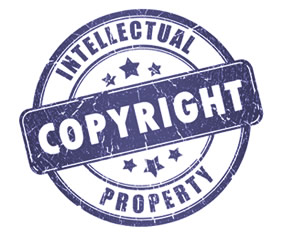 Intellectual property (IP) and copyright infringement
Intellectual property (IP) and copyright infringement
This is a complaint from a brand owner about an Amazon product listing. This is not a complaint about any of your inventory in stock at Amazon. Usually, an IP claim or copyright claim is filed when a brand owner thinks that a product page on Amazon (not associated with the brand owner) is using their images, copy, bullet points, description, or even brand name without the brand’s permission.
Counterfeit claims
This is usually a complaint from a customer that the item they ordered from you is not an authentic item, but instead a counterfeit (fake). While an IP claim is focused on the Amazon product sales page, a counterfeit claim is focused on your actual inventory. The counterfeit accusation usually centers around doubts that the inventory item is authentic or that it was acquired from an authentic source.
The way these problems generally show up is this:
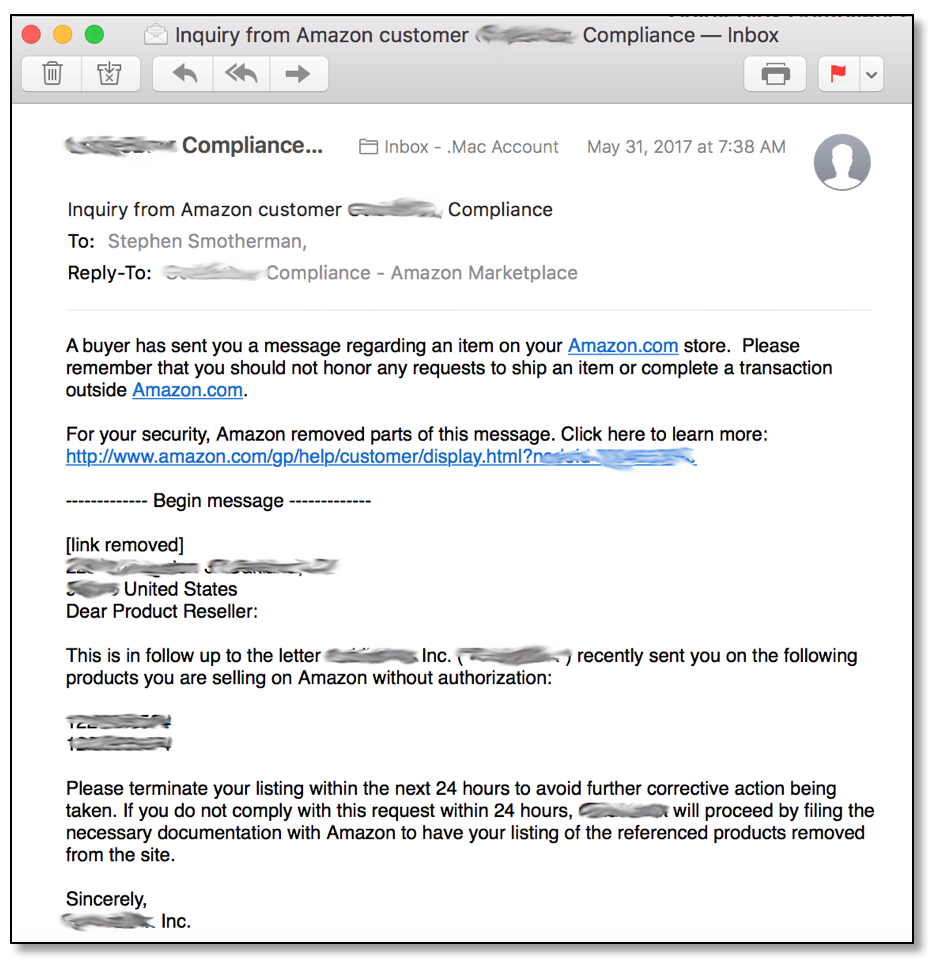 An FBA seller receives an email from someone who looks like the brand owner of an item in their inventory. The sender of the email may or may not actually be the brand owner. In some cases, the sender is, in fact, the brand owner or a legal representative. In other cases, the sender is a competitor on Amazon who is trying to act scary so that other sellers will be intimidated into abandoning the listing.
An FBA seller receives an email from someone who looks like the brand owner of an item in their inventory. The sender of the email may or may not actually be the brand owner. In some cases, the sender is, in fact, the brand owner or a legal representative. In other cases, the sender is a competitor on Amazon who is trying to act scary so that other sellers will be intimidated into abandoning the listing.
The email generally contains a demand and a warning. The demand is that the seller stop selling the item on Amazon, and the warning is that the brand owner (real or fake) will take legal action and/or report the seller to Amazon if the demand is not met. Typically the demand for the seller to stop selling is based on an IP or copyright infringement or a counterfeit claim.
It can be hard to tell whether this type of email is legit or not. Sneaky competitors can go to great lengths to make their threats look authentic. You could look for misspellings, typos, or other signs that the sender is not a professional, but not every trickster has poor grammar and spelling.
 The best course of action is to handle any IP infringement or counterfeit claim email the same way, regardless of whether you suspect the sender is a competitor. Here’s what I would do:
The best course of action is to handle any IP infringement or counterfeit claim email the same way, regardless of whether you suspect the sender is a competitor. Here’s what I would do:
- Email Seller Central to notify them of the situation and ask for clarification – is the item, in fact, restricted for you to sell?
- When you email Seller Central, be sure to copy and paste the email you received, and be sure you include the name and contact info for the person who sent you the email. If the email does turn out to be from a brand owner, you want to have a paper trail showing that you are making every effort to go through the proper channels and do the right thing with Seller Central.
- Send a response to the sender of the email.
- Include text in the response along these lines: “I apologize for any mistake on my part in selling this item. I did not realize I could not sell it. It is not restricted to me when listing on Amazon. If you do not want other sellers selling the item, I suggest you work with Amazon to restrict your brand. I have reached out to Amazon to find out how to proceed from here.”
- If you know for sure that the email came from a legitimate brand owner or representative, you could also include a line in your response such as this one: “What do I need to do to get approval from you to sell this item on Amazon and open a wholesale account with you?”
What happens after you send your response could go a couple different ways:
- If you receive no further communication, you can probably assume the original email came from a competitor who now realizes you aren’t going to be easily scared off the listing.
- If you receive further communication from the brand owner, make every effort to work with them and Seller Central to make the situation right. Always create a paper trail showing that you are working to figure out the best solution. Who knows buy you might could even earn a wholesale account with the brand this way.
 Another strategy that some legitimate brand owners use is to send you an email claiming IP or copyright infringement, but ignore any of your email replies. Instead they only send a second and third email over the span of a few days once again claiming IP or copyright infringement. After they have emailed you three times over a certain period of time, they then go to Amazon and state, “We emailed the seller about their IP or copyright infringement on three separate occasions and the seller refuses to remove their stock from the Amazon sales page.” When this happens, Amazon (without any fact checking) suspends your ability to list or sell that item on Amazon.
Another strategy that some legitimate brand owners use is to send you an email claiming IP or copyright infringement, but ignore any of your email replies. Instead they only send a second and third email over the span of a few days once again claiming IP or copyright infringement. After they have emailed you three times over a certain period of time, they then go to Amazon and state, “We emailed the seller about their IP or copyright infringement on three separate occasions and the seller refuses to remove their stock from the Amazon sales page.” When this happens, Amazon (without any fact checking) suspends your ability to list or sell that item on Amazon.
The best way to respond to this if it happens to you is to email Seller Central and tell Amazon the brand owner won’t respond. Include in your message a screen shot of your attempt at communication. Then politely request Amazon to remove the complaint due to the brand owner’s lack of response. You can even tell Amazon that the brand might be trying to control the sales of their products through IP and copyright complaints which is against Amazon terms of service.
 Is It Worth The Time/Energy to Fight?
Is It Worth The Time/Energy to Fight?
Part of the frustration with receiving a claim of this sort stems from having inventory at the FBA warehouse that you could theoretically no longer sell on Amazon if the brand owner prohibits it. If you only have one or two items in stock, it might not even be worth your time and hassle to deal with trying to sell it on Amazon. In this case I would just remove it from FBA and sell it on eBay or somewhere else.
If you have many of the item in stock, it is still a hassle, but it’s likely worth your time and effort to clear up the claim, produce receipts or invoices if necessary, and go through the proper channels to either gain approval or otherwise resolve the situation. Even if you have to remove the items from the warehouse until the situation is resolved and you can send them back in, at least you’re only out the money for the removal order and the shipping to send them back.
 In the unlikely event you as a seller get suspended by Amazon over a situation involving a brand owner, you want to make sure you have created a paper trail such as the one we discussed above and have kept your receipts or invoices. As of the time of this writing, Amazon accepts either retail receipts or invoices from a supplier/distributor as proof of authenticity, as long as they are within a particular timeframe and have appropriate UPC or other identifying numbers tying them to the item in question.
In the unlikely event you as a seller get suspended by Amazon over a situation involving a brand owner, you want to make sure you have created a paper trail such as the one we discussed above and have kept your receipts or invoices. As of the time of this writing, Amazon accepts either retail receipts or invoices from a supplier/distributor as proof of authenticity, as long as they are within a particular timeframe and have appropriate UPC or other identifying numbers tying them to the item in question.
What If I Don’t Have a Receipt?
A question that often comes up at this point is “what do I do if I got the item at a garage sale and don’t have a receipt?” In this case it’s likely that you only have one of the item to sell, so just remove it from FBA and move on to better inventory.
 Most of the time when Amazon decides to suspend selling privileges over an IP or counterfeit claim, they don’t suspend the seller’s entire account at first, but they begin by suspending privileges on one particular ASIN. In these cases, you have time to work things out with Seller Central and the brand owner to clear up the situation, apologize, and promise not to sell the item/brand any more, as a way to protect your overall account.
Most of the time when Amazon decides to suspend selling privileges over an IP or counterfeit claim, they don’t suspend the seller’s entire account at first, but they begin by suspending privileges on one particular ASIN. In these cases, you have time to work things out with Seller Central and the brand owner to clear up the situation, apologize, and promise not to sell the item/brand any more, as a way to protect your overall account.
An account suspension usually doesn’t happen after one incident, but after multiple incidents – so take care of problems as they come up, and you really don’t need to worry over a sudden, dramatic suspension out of nowhere. Just stop selling the problem item, shake off the dust, learn whatever lessons you need to learn, and move on to finding better inventory to sell on Amazon.
Overall, the possibility of receiving IP infringement or counterfeit claims on your Amazon account should present itself as a speed bump, not a dead end. Many sellers are so fearful of these types of claims that they’ve declared “RA is dead!” – but I think those types of reactions are exaggerated and unnecessary. Hopefully this blog post has given you a starting point for how to think through the possibilities and handle this situation if it arises for your business.
 ASIN or Account Suspended?
ASIN or Account Suspended?
If you do find yourself with a suspended ASIN (or worse, an Amazon account suspension), then I highly recommend contacting Cynthia Stine of eGrowth Partners. If I was ever suspended, this is the service I would hire immediately to help me get either and ASIN reinstated or even my account reinstated. They have an amazing track record and have helped many Amazon sellers get reinstated very quickly.
How to Fight an IP or Counterfeit Claim
Usually, when you get an IP claim or an inauthentic claim (counterfeit), Amazon will tell you exactly what you need to do or fix in order to remove the claim from your account. Go through the proper channels to give Amazon what they are needing and then be ok with whatever they decide in your appeal.
How Long Will an IP Claim Be on My Account?
Usually, an IP claim will be visible on your account for 6 months, and then it will disappear. Just know that Amazon still keeps track of your IP claims and counterfeit claims, so just because you can’t see it, doesn’t mean that Amazon doesn’t know it was there. You’ll still need to do what you can to avoid any claims in the future so they don’t add up and hurt your seller metrics. Check on your Amazon seller account health often.
How to Know the Brands that File IP Claims Before You Source Them
There is now a tool (that works for both OA and RA) that will tell you if a brand you’re thinking of buying to sell on Amazon has a history of filing IP claims against sellers. The tool is called IP Alert and it can let you know before you buy if a brand is trigger happy on filing IP claims. This tool can save you a lot of time and heartache.
Use the code FULLTIME30 for $30 off the price of this desktop and mobile tool.
![]()
So what about you? Have you experienced any of these situations before? Are there any additional strategies you’ve found to be helpful? I’d love to hear from you in the comments below.
*Post updated for 2022
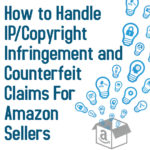
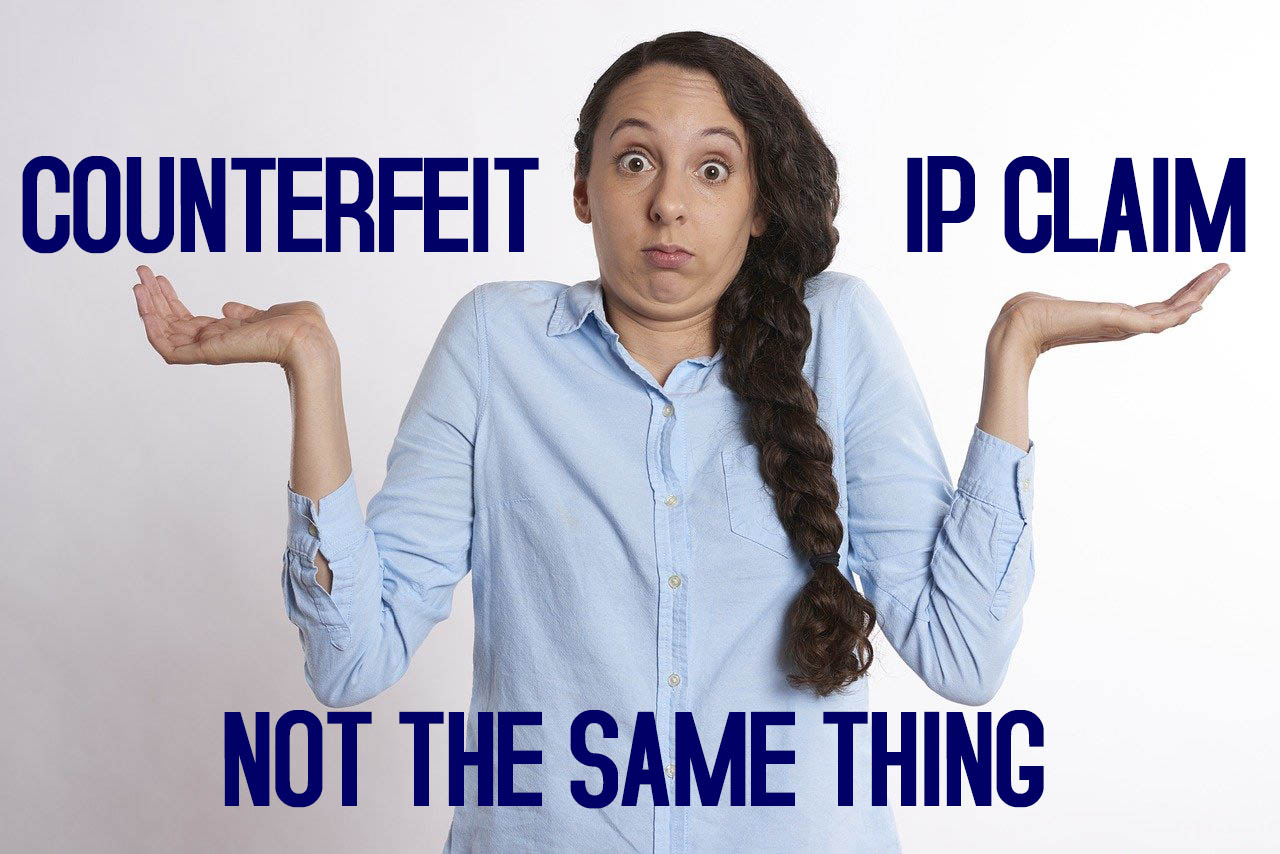
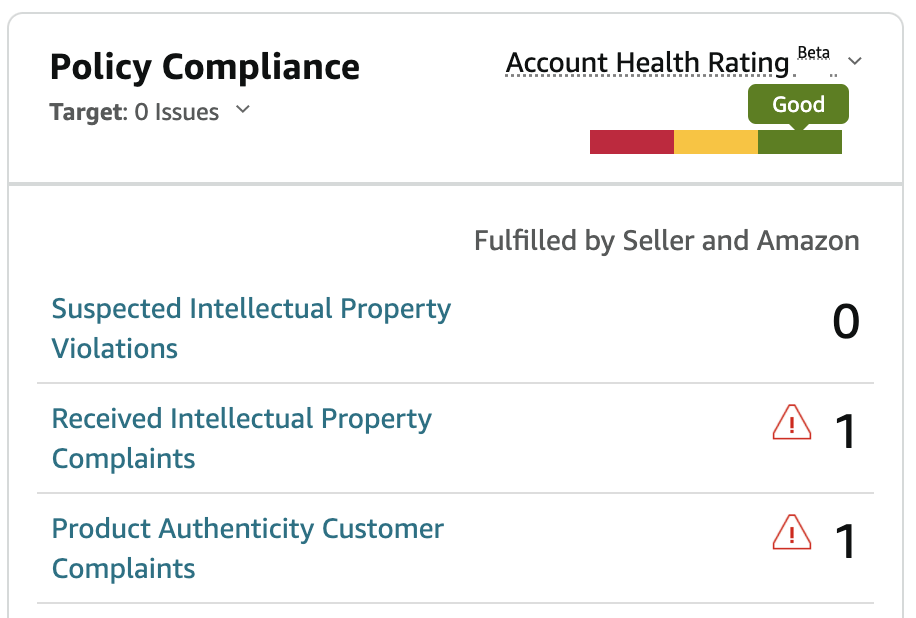
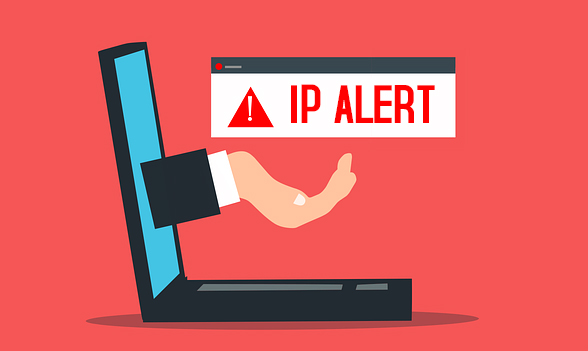
Stephen – great post, helpful information indeed. I actually got an email from Amazon about two weeks ago claiming I believe IP infringement and counterfeit item. When I looked at the item, a GE branded water filter I had purchased at Walmart in clearance, it was inactive because I had no inventory, and hadnt for well over a year. I thought it was interesting that they would ding an inactive listing. In my case I just deleted the listing and went on to other things.
Amazon as a platform has become so increasingly hostile toward sellers, I am very close to closing down my shop entirely.
The exact situation described in the article happened to me. Brand owner contacted me and I emailed Amazon and showed them the email and Amazon said not to thake any action. The brand owner filled 1 IP complaint for each ASIN and left a bad review saying my items were counterfeit. My account is under review
That would not be a counterfeit claim but only an IP claim… It was sent to ALL the sellers who currently have that item listed in their inventory (even if you have zero in stock). Remember, the claim is against the listing, not your inventory. This is why I love to do some Spring Cleaning and delete any inventory I’ve sold out of and don’t plan on restocking so I don’t get a lot of these complaints on items I’ll never sell again.
Great info, thank you.
You mention: “You can even tell Amazon that the brand might be trying to control the sales of their products through IP and copyright complaints which is against Amazon terms of service.”
Can you point to where that is expressed in Amazon’s TOS publicly somewhere? I would love to read up in more detail on this!
Here is a link to the Amazon TOS: https://www.fulltimefba.com/amazontos.
I searched for this in the TOS and cannot find it. Which section is it I ?
Wonderful article! Encouraged me to write through SC regarding an email I rec’d early this month, allegedly from a manufacturer, about two products that I had listed. Here is the gist of their answer to me:
“…would like to inform you that, Amazon respects a manufacturer’s right to institute policies and rules to manage and control the distribution of its products. However, Amazon considers the enforcement of these policies and rules to be a matter between the manufacturer and the retailers. As a result, it would not be appropriate for Amazon to assist in such enforcement activities.”
I was very suspicious of the “violation” that I had rec’d from the manufacturer because they specifically listed two products that I had listed, demanding they be removed, yet they didn’t mention the other ten!
Stephen, I did not receive an email from a brand owner (real or fake) but a direct email from Amazon that I had been flagged with an IP violation (a check of seller central shows the same, so I’m sure the email is legit). How do I proceed in this situation since there is no brand email to contact?
You’ll need to come up with an action plan to submit to Amazon about this situation. I suggest telling them where you got your item to sell, provide receipts or invoices for those items, and then tell them you won’t sell the item again. Then, just move on to sell other profitable items on Amazon. You could try to fight the IP violation, but I don’t see that as the best use of time.
I got an IP violation and sent an apology letter when it happened and today. I attempted to remove the item from my catalog, but AZ labeled it “Inactive Blocked.”
Do you mean “remove the item” from an Amazon FBA warehouse to be sent back to you… or do you mean “remove the item” from your inventory list by deleting or archiving the listing?
The link to IP Alert gives me a 403 error code.
I think that was just a glitch. I checked and it’s working fine. Try again and it should work for you.
It didn’t work all say yesterday but it is working today. Thanks! 🙂
Hi Stephan,
Received Policy Warning from Amazan Seller central UK.
”We removed some of your listings because we received a report from a rights owner that they may infringe the rights owner’s trademark. The rights owner’s communication about the alleged infringement and the listings we removed are at the bottom of this message.”
By the way, it was our first listed item and did the mistake by Me Too wrong ASIN, but the design was the same.
Could you please advise to move forward?
Thanks,
I would need a lot more info to make my best suggestion, but overall, it’s best to just let it go and move on to other inventory you can sell. It stings, but is the best thing to do in most cases.
Hello. I received 2 IP complaints within 3 weeks of each other. The first one was from a brand via Amazon. Listing removed and moved on. The second IP complaint took my account down to critical event warning. I reached out to the complainant via email (provided by Amazon) in my warning email. This email was kicked back to me due to “email does not exist”. That leaves me to believe this may be a competing seller? Looking for advice on how to proceed. I am currently shut down for fear of suspension.
Let Amazon know you attempted communication and how it’s not working.